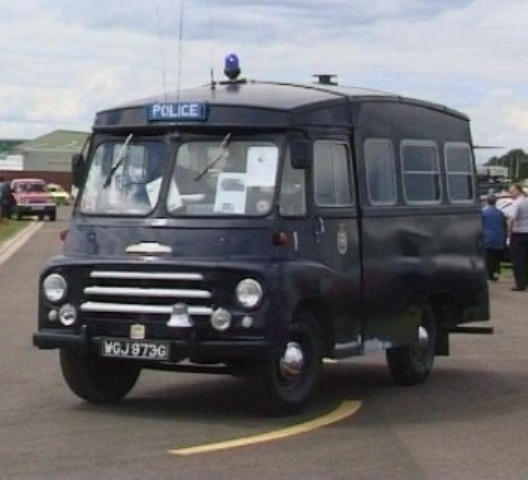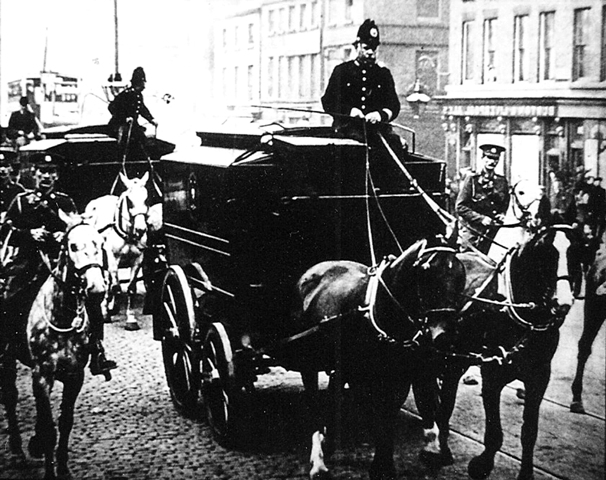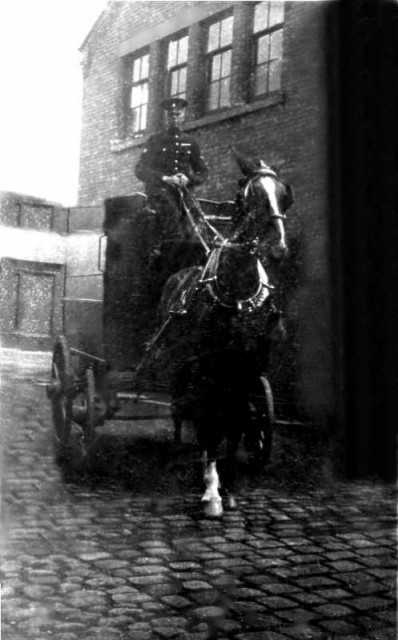BLACK MARIA by peter dellius, retired
Black Maria
The Name Black Maria is a slang term for a Police vehicle used to transport prisoners, this term and also the term “Paddy Wagon” seem to have evolved in America and have traveled worldwide and are found in everyday usage in many countries.
Many reasons for the name Black Maria have been put forward but the generally accepted one is that it is named after Maria Lea, a large and fierce Black Boarding House Keeper.
Two explanations are related for the term Paddy Wagon.
- Most of the Clients conveyed therein were Irish.
- Most of the Police officers therein were Irish.
THE Black Maria was also referred to in certain circles “Mothers Heart” the inference being; “There is always room for one more”
Liverpool City Police made use of the “Black Maria”, these in the early days being horse drawn and later mechanized.
I hope that my recollections of some fifty years ago are of some interest as will be remembered also by so many surviving colleagues from when I joined the Force in 1960.
I can remember that in the early 1960’s, whilst posted to Essex Street Bridewell – ‘C’ Division, that a large black van, which was utilised for various purposes, was commonly known by the term ‘Black Maria’ by all the personnel known to me, serving at that time. I can recall that it was used for the conveyance of prisoners from Essex Street to the Main Bridewell. During day/evening time, the same van was used for the purpose of collecting officers from the various dock gates, where they were posted – from the Dingle Lane to the Coburg, and conveying them to Lark Lane Police Station canteen. Then on the return journey providing the same service for the relieving officers.
The ‘black maria’ was usually driven by a female civilian driver, one being Louise, another Hazel, dressed in a dark green uniform. Whilst performing their tasks both ladies were very popular and friendly with all the officers.
The rear of the van contained just two wooden bench type seats along each side. (Not built for comfort).When officers were on ‘Evening Patrol’ shift, finishing at 2.00am. the van was utilised to drop them off near their respective home. (We couldn’t afford our own transport in those days, Ahhhh!).
BUT, most importantly, the very same van, known to us as the ‘black maria’, was the usual means of transport for assisting officers effecting a street arrest, to convey their prisoner(s) to the Bridewell, unless of course within walking distance. The transport would usually be summoned by means of a public telephone, if one was available and not vandalised. (We were always advised to keep three copper pennies with us for emergencies).
The ‘black maria’s’ as with the large ‘dog van’ at that time, displayed a small green light situated above the windscreen and which was visible from quite some distance during it’s approach, which was a most welcome sight. especially as an officer may be struggling to restrain a prisoner.
I recall actually driving the ‘back maria’ myself on a few occasions, when performing duty with colleagues at Anfield and Goodison Park football grounds.
Times have really changed since those days, which will be recalled by many with their own memories. I just trust that my own recollections are accurate.
Brian Smith Retd.
My first (and last) encounter with a Liverpool “Black Maria
(Alternatively known as the “Hurry up Van”) was in 1969 on its arrival outside the ABC Cinema on Lime Street to collect me and a rather large Irishman, who had decided that the steps of the Cinema would afford him relief and used it as a urinal. The vehicle that arrived was a large flat fronted very dark Blue almost black colour, with two large doors at the rear, a sliding door in center behind driver/passenger and wooden bench seats along rear interior. The lone officer driving, although Liverpool and Bootle the driver was proudly sporting his Liverpool City Police cap badge and collar liver birds. Their was a wooden sound box which looked homemade in which was placed the officers Pye radio receiver (the Pye radio was issued as a set Receiver and transmitter)After a very bumpy journey, via Duke Street Police Station annex (Situated between Colquitt Street and Kent Street, up steps and inside the Liverpool Corporation Lighting Department) to collect a Constable and another rather excitable prisoner from the aforementioned Station steps, I was deposited along with prisoner at the Main Bridewell.
Peter Dellius




